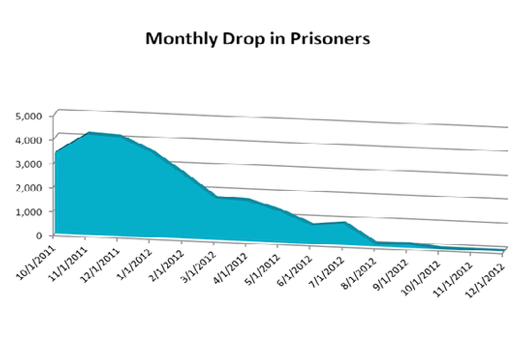Nov. 20, 2012
For those who have questioned the efficacy and ultimately the relevance of Reentry Courts in the criminal justice system, the following news should be of great interest. I present the following News Release from the National Center for State Courts:
Williamsburg, Va. — Indiana Superior Court Criminal Division Judge John F. Surbeck Jr. has been named recipient of the 2012 William H. Rehnquist Award for Judicial Excellence from the National Center for State Courts. One of the most prestigious judicial honors in the country, the Rehnquist Award is presented annually to a state court judge who exemplifies the highest level of judicial excellence, integrity, fairness, and professional ethics. Chief Justice of the United States John G. Roberts Jr. will present the award to Judge Surbeck during a ceremony at the U.S. Supreme Court in Washington, D.C. on November 15.
“Judge Surbeck is an inspiration and an example to everyone who works in the justice system. He has accomplished what most of us set out to do with our lives – he’s making a true difference in the lives of others,” said NCSC President Mary C. McQueen. “Those who work with him, refer to Judge Surbeck as a pioneer and a trailblazer in the field of reentry courts. I would add that he’s also a proven leader for the nation’s court community when it comes to integrity and judicial innovation.”
Judge Surbeck is the founder of reentry courts in Indiana and considered a “trailblazer” nationally in this field. Through the progression of his career – a public defender for 16 years before becoming a judge in 1988 – he became aware of the need for reentry courts. As a public defender, Judge Surbeck realized he represented one generation of individuals, then as a judge he saw those individuals’ children and grandchildren appear before him in criminal court. He was determined to change that cycle. Judge Surbeck took a map of the city and tracked the addresses to which prisoners returned after release. His map revealed that prisoners overwhelmingly returned to the neighborhoods where drugs and other illegal opportunities are in abundance. This was evidence to Judge Surbeck that once released, prisoners had no chance of success without a solid support system.
In 2000, Judge Surbeck worked with others to design the Allen County Reentry Court, which helps transition offenders on early release back into the community by providing counseling, mentoring, and help with finding a job. Five years after establishing the reentry court, statistics showed that the program had reduced the rate of prisoners reoffending to 34 percent, compared to nearly 60 percent nationally. Since opening in July 2001, more than 600 offenders have completed the program.
“Judge Surbeck has made a tremendous and long-lasting impact on the courts of Indiana and elsewhere and has brought fresh ideas and a proven track record to the seemingly intractable problem of recidivism,” Indiana Chief Justice Brent E. Dickson and Lilia Judson, Executive Director, Division of State Court Administration, said in a letter of reference for the award.
Before being appointed a Superior Court judge in 1988, Judge Surbeck served as an Allen County deputy public defender from 1972 to 1988. He has been named Judge of the Year by the Indiana Correctional Association and in 2002 was named Fort Wayne Journal Gazette Citizen of the Year. He received his law degree from Indiana University.
I provide this press release mid-week as it is of some importance. I will have more to say about this seminal event next week.






